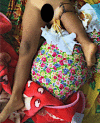Modified Borggreve-Van Nes-Winkelmann rotationplasty for surgery in developing countries
- PMID: 36071411
- PMCID: PMC9454124
- DOI: 10.1186/s12893-022-01780-z
Modified Borggreve-Van Nes-Winkelmann rotationplasty for surgery in developing countries
Abstract
Background: Amputation is still the most common therapy for patients suffering from osteosarcoma in Myanmar, despite the fact that limb salvage surgery e.g. Borggreve-Van Nes-Winkelmann rotationplasty for malignant tumors located within the distal femur or proximal tibia is the current state-of-the-art reconstructive procedure. A safe and reliable operation technique is crucial in order to perform a complex surgical procedure like the rotationplasty in lower-middle income economies with limited infrastructure and resources. The authors present seven cases of patients with osteosarcomas that received a Borggreve-Van Nes-Winkelmann rotationplasty with an evaluation of the procedures focusing on safety and sustainability.
Methods: From 2019 until 2020, seven young patients with osteosarcomas of the distal femur or proximal tibia were treated with Borggreve-Van Nes-Winkelmann rotationplasties in the Orthopaedic Hospital in Mandalay, Myanmar. As modification of the standard procedure the dissection and subsequent clamping of the femoral artery in order to minimize blood loss as well as the formation of an adipocutaneous flap that minimizes swelling and decreases the pressure on the vessels were successfully performed. This modified procedure resembles a safe and simplified surgical technique that is feasible under the circumstances of lower-middle income economies with good outcomes.
Results: All patients showed good functional and aesthetic results. One of the seven patients needed secondary wound closure due to wound dehiscence.
Conclusions: A simplified and safe operation technique for the performance of the Van Nes-Borggreve rotationplasty was adapted to the given constraints in lower-middle income economies and proved to be successful. Trial registration All patients approved to participate in the study and have given consent to publication.
Keywords: Orthopedic surgery; Plastic surgery; Reconstructive surgical procedure; Surgical oncology.
© 2022. The Author(s).
Conflict of interest statement
The authors declare no conflict of interest.
Figures











Similar articles
-
Rotationplasty (Borggreve/Van Nes and modifications) as an alternative to amputation in failed reconstructions after resection of tumours around the knee joint.Scand J Plast Reconstr Surg Hand Surg. 2008;42(4):199-201. doi: 10.1080/02844310802069434. Scand J Plast Reconstr Surg Hand Surg. 2008. PMID: 18763196
-
[Rotationplasty in the surgical treatment plan of primary malignant bone tumors. Possibilities and limits].Orthopade. 2003 Nov;32(11):965-70. doi: 10.1007/s00132-003-0550-y. Orthopade. 2003. PMID: 14615846 German.
-
The use of free microvascular techniques to improve the results of Van Nes rotationplasty.Ann Plast Surg. 2013 Jun;70(6):672-4. doi: 10.1097/SAP.0b013e31824332be. Ann Plast Surg. 2013. PMID: 23123608
-
Rotationplasty Salvage Procedure as an Effective Alternative to Femoral Amputation in an Adult With a History of Osteosarcoma: A Case Report and Review.Front Surg. 2022 Jan 7;8:820019. doi: 10.3389/fsurg.2021.820019. eCollection 2021. Front Surg. 2022. PMID: 35071319 Free PMC article. Review.
-
Optimizing Traumatic Limb Salvage: Ectopic Implantation and Staged Rotationplasty.Medicina (Kaunas). 2023 Oct 23;59(10):1879. doi: 10.3390/medicina59101879. Medicina (Kaunas). 2023. PMID: 37893597 Free PMC article.
Cited by
-
Case Report: Winkelmann hip rotationplasty as a last-resort solution.Front Surg. 2025 Jan 7;11:1433291. doi: 10.3389/fsurg.2024.1433291. eCollection 2024. Front Surg. 2025. PMID: 39850519 Free PMC article.
References
-
- Suman Byregowda A, Puri AG. Biological methods of reconstruction after excision of extremity osteosarcoma. Medicine (Baltimore) 2016;99(27):e20715.
-
- Askari R, Umer M. Our experience with Van Nes Rotationplasty for locally advanced lower extremity tumours. J Pak Med Assoc. 2014;64:S139–S143. - PubMed
MeSH terms
Grants and funding
LinkOut - more resources
Full Text Sources
Medical
Research Materials

